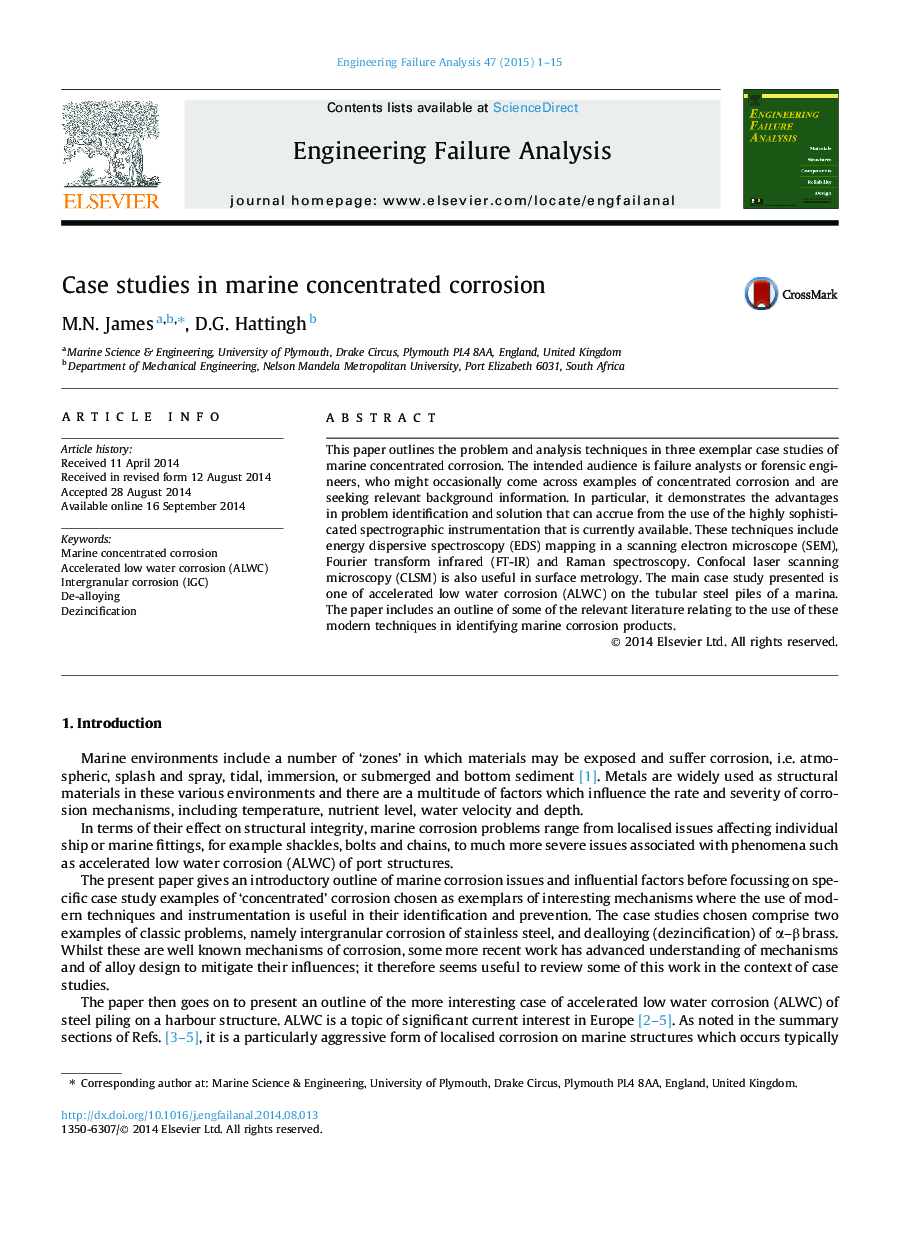| Article ID | Journal | Published Year | Pages | File Type |
|---|---|---|---|---|
| 768602 | Engineering Failure Analysis | 2015 | 15 Pages |
•Identification and remediation of marine concentrated corrosion in forensic engineering.•Illustration of use of advanced spectroscopy in marine concentrated corrosion failure.•Focus on identification and mitigation of ALWC in a marina.•DNA fingerprinting of sulphate-reducing bacteria.•Outline of recent relevant literature on use of spectroscopy in identification of corrosion products.
This paper outlines the problem and analysis techniques in three exemplar case studies of marine concentrated corrosion. The intended audience is failure analysts or forensic engineers, who might occasionally come across examples of concentrated corrosion and are seeking relevant background information. In particular, it demonstrates the advantages in problem identification and solution that can accrue from the use of the highly sophisticated spectrographic instrumentation that is currently available. These techniques include energy dispersive spectroscopy (EDS) mapping in a scanning electron microscope (SEM), Fourier transform infrared (FT-IR) and Raman spectroscopy. Confocal laser scanning microscopy (CLSM) is also useful in surface metrology. The main case study presented is one of accelerated low water corrosion (ALWC) on the tubular steel piles of a marina. The paper includes an outline of some of the relevant literature relating to the use of these modern techniques in identifying marine corrosion products.
